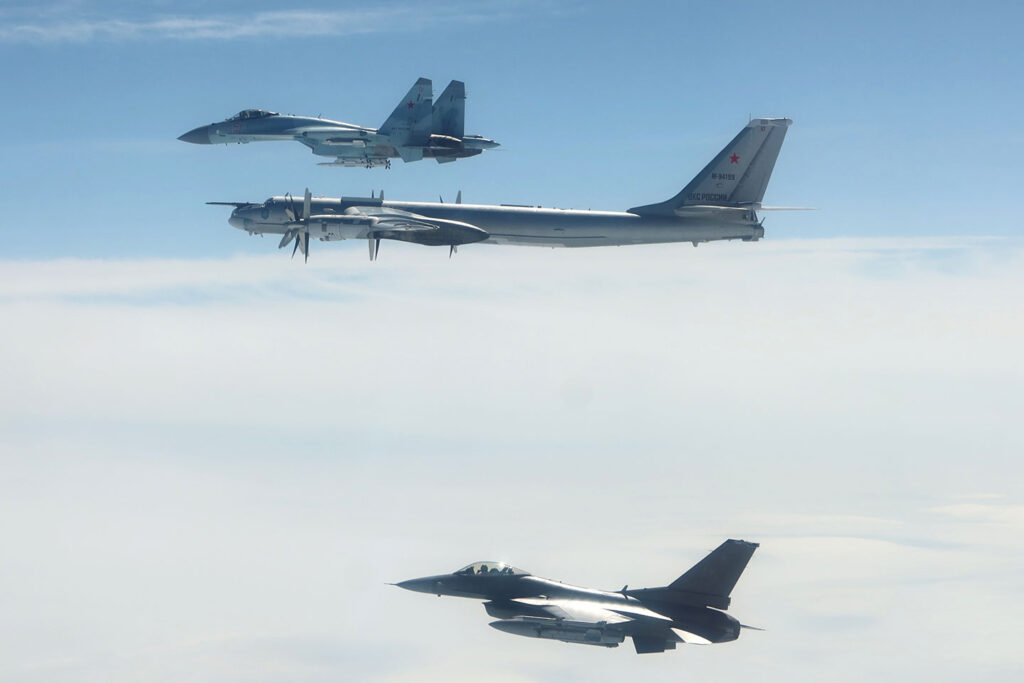In five incidents over five weeks, the North American Aerospace Defense Command (NORAD) detected and tracked Russian aircraft operating in the Alaskan Air Defense Identification Zone (ADIZ) in July and August 2025. The Russian aircraft included two Tupolev Tu-95 Bear strategic bombers, two Sukhoi Su-35 Flanker fighter jets and four Ilyushin Il-20 Coot spy planes, Stars and Stripes newspaper reported.
In the first incident, on July 22, NORAD scrambled six fighter jets — two F-35 Lightning IIs and four F-16 Fighting Falcons — to intercept, identify and monitor the two Tu-95 bombers and a pair of Su-35 fighter jets near the Bering Sea west of Alaska over the course of three hours, Stars and Stripes reported. The NORAD fighter jets were accompanied by two KC-135 Stratotankers for potential refueling and an E-3 Sentry Airborne Warning and Control System aircraft, which provides all-weather surveillance, command, control and communications.
The Russian aircraft stayed in international airspace and did not enter United States or Canadian airspace, NORAD said in a news release. The NORAD fighter jets escorted the Russian aircraft until they left the Alaskan defense zone. This Russian activity in the Alaskan ADIZ, a buffer zone outside of U.S. and Canadian airspace where foreign military and commercial aircraft are monitored, happens regularly and is usually not viewed as a threat.
“Nothing out of the ordinary,” Canadian Air Force Capt. Rebecca Garand, a NORAD spokeswoman, told Stars and Stripes. “There was no special or obvious reason they were there.”
In the second incident, on August 20, NORAD detected and tracked one Il-20 Coot surveillance-reconnaissance aircraft. NORAD scrambled two F-16s and a KC-135 tanker to monitor the aircraft in the Alaskan ADIZ. The Il-20 remained in international airspace and did not enter U.S. or Canadian airspace, a NORAD news release said.
The next day, August 21, NORAD detected and tracked another Il-20 Coot spy plane. NORAD deployed an E-3, two F-16s and one KC-135 tanker. Once again, the Il-20 stayed in international airspace and did not enter U.S. or Canadian airspace.
The fourth incident occurred on August 24, when NORAD again detected and tracked an Il-20. NORAD responded with an E-3, two F-16s and two KC-135s, and again the Il-20 stayed in international airspace, NORAD said.
The fifth incident was on August 26, when NORAD detected and tracked an Il-20, and scrambled an E-3, two F-16s and one KC-135. Yet again, the Russian spy plane stayed in international airspace.
NORAD employs a layered defense network of satellites, ground-based and airborne radars, and fighter aircraft to detect and follow aircraft, the NORAD news releases said.

